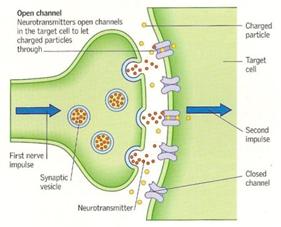One in four Canadians have depression that is to a degree worthy of clinical assessment, and treatment. With a number as alarming as this, why do we see that this particular mental health issue is so infrequently spoken about?
This is because there is an enormous stigma that surrounds clinical depression. In particular, polls show that 46 percent of Canadians believe that people suffering from depression are using the diagnosis as an excuse for their behaviours. This is not the case.
This stigma (held by nearly half of the nation) can be discredited by the scientific research that has gone into deciphering the physiological mechanisms of this mental health issue.
In particular scientists at the NIMH have concluded that depression is associated with a deficiency in a neurotransmitter known as serotonin. This is a di-cyclic compound that activates neurons within the central nervous system, promoting the feeling of happiness or well-being.

https://healthpsych.psy.vanderbilt.edu/2009/StopSadness_files/image010.jpg
Mechanistically, serotonin is released from the axon of one neuron, and taken up through a channel protein within the dendrite of an adjacent neuron. In individuals suffering from depression, the channel protein’s ability to accept serotonin is not optimal, and essentially the feeling of happiness, and well-being elicited by the transmission of serotonin, is lost or not optimal. How is this treated?
Antidepressants are used as a treatment for this disorder by acting directly upon serotonin’s mechanism. In particular, the administration of a class of drugs known as “selective serotonin re-uptake inhibitors” are prescribed. Essentially, this class of drugs allows serotonin to remain in the “synaptic cleft” (the extracellular space between the two neurons) for a longer amount of time. This is done by inhibiting the axon’s serotonin re-uptake channels, which are channels responsible for allowing serotonin to flow back into the axon from which it was released. Essentially SSRI’s are compounds that chemically interact with (and physically block) these re-uptake channels. In doing so, this provides the disabled dendritic channel proteins with a longer period of exposure to the serotonin, and consequently, are able to take up near normal amounts of serotonin.
In conclusion, the symptoms felt by those suffering from depression, such as hopelessness, sadness, lethargy, and many more; are in part, caused by a proven physiological deficiency. With no control over the processes that we have discussed today, we can also conclude that those suffering from depression are unable to control particular behaviours (to a certain degree).
